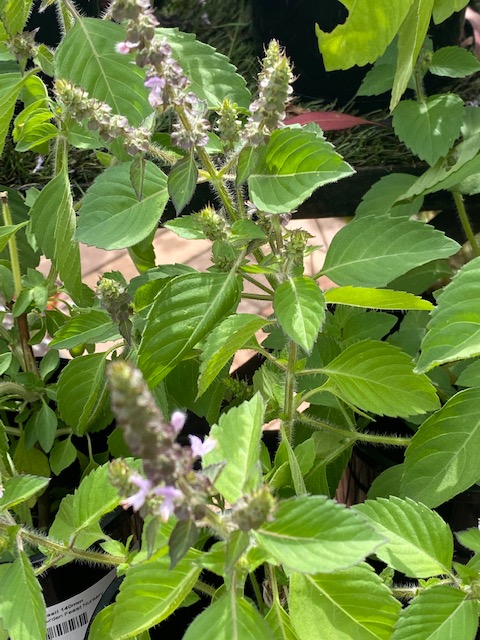BASIL HOLY GREEN
OCIMUM SANCTUM syn. TENUIFLORUM
Holy basil, scientifically known as Ocimum tenuiflorum but often referred to as tulsi or tulasi, is a remarkable flowering plant belonging to the mint family (Lamiaceae). Native to the Indian subcontinent and flourishing across Southeast Asia, holy basil is highly esteemed for its aromatic leaves, which serve multiple purposes in various cultures.
In the realm of traditional medicine, holy basil plays a pivotal role in Ayurveda and is a staple in folk medicine practices. It is frequently employed as the primary ingredient in herbal teas, concoctions sought after for their therapeutic properties, addressing a diverse range of health concerns. Moreover, holy basil holds profound significance within Hinduism, where it is regarded as a sacred plant, often found in homes and temples, symbolizing devotion and purity.
Beyond its medicinal and spiritual significance, holy basil extends its utility to culinary applications. It boasts a pungent flavor profile that gains intensity through the cooking process. This distinctive taste can be likened to a harmonious blend of clove, Italian basil (Ocimum basilicum), and mint, with a peppery spiciness that sets it apart from its culinary counterparts.
However, it is worth noting that in some regions outside its native habitat, holy basil is viewed as an agricultural weed and invasive species, capable of flourishing beyond its intended cultivation. This dichotomy of reverence and caution underscores the complex and multifaceted nature of this extraordinary herb, making it a unique and versatile botanical treasure.
Additional information
| Weight | .5 kg |
|---|---|
| Dimensions | 20 × 20 × 20 cm |





